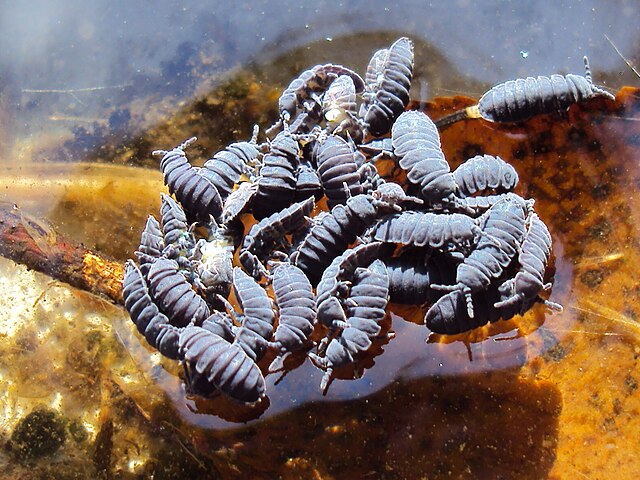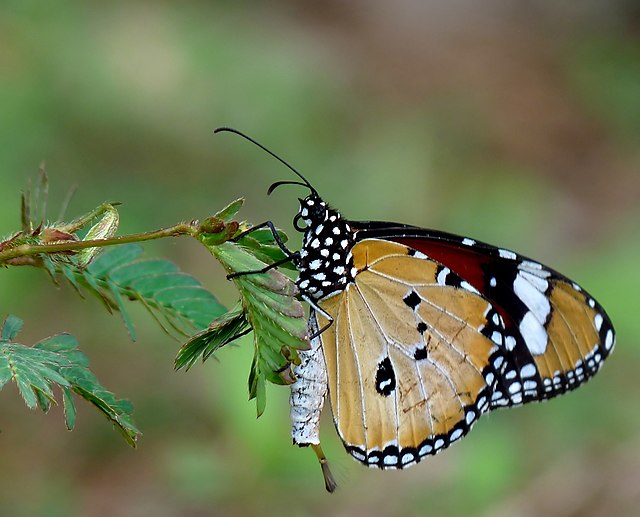Ropalidia marginata is an Old World species of paper wasp. It is primitively eusocial, not showing the same bias in brood care seen in other social insects with greater asymmetry in relatedness. The species employs a variety of colony founding strategies, sometimes with single founders and sometimes in groups of variable number. The queen does not use physical dominance to control workers; there is evidence of pheromones being used to suppress other female workers from overtaking queenship.
Ropalidia marginata
Nest of Ropalidia marginata
Foundress and an egg By Dulneth Wijewardana
Larva and eggs
A pheromone is a secreted or excreted chemical factor that triggers a social response in members of the same species. Pheromones are chemicals capable of acting like hormones outside the body of the secreting individual, to affect the behavior of the receiving individuals. There are alarm pheromones, food trail pheromones, sex pheromones, and many others that affect behavior or physiology. Pheromones are used by many organisms, from basic unicellular prokaryotes to complex multicellular eukaryotes. Their use among insects has been particularly well documented. In addition, some vertebrates, plants and ciliates communicate by using pheromones. The ecological functions and evolution of pheromones are a major topic of research in the field of chemical ecology.
A fanning honeybee exposes Nasonov's gland (white – at tip of abdomen) releasing pheromone to entice swarm into an empty hive
Aggregation of bug nymphs
Aggregation of the water springtail Podura aquatica
Male Danaus chrysippus showing the pheromone pouch and brush-like organ in Kerala, India








